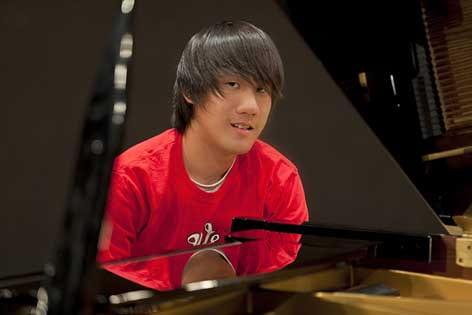Acute stroke team saves teenager from severe brain injury
Swift action by medical center’s acute stroke team saves teenager from severe brain injury.

Practice was nearly over when high school wrestler Darrin Ching collapsed and found himself pinned to the mat, a searing pain gripping his right temple. Alarmed, his coach and teammates huddled around and tried to get him upright.
“I could hear them talking, but I couldn’t move. I couldn’t feel my left side,” Darrin recalls. Dehydration, the coach surmised, given the team’s exertions on that hot Friday afternoon in September 2009. One of the paramedics who loaded the Diamond Bar teenager into an ambulance wasn’t so sure.
Darrin’s sudden inability to move his left side, coupled with severe pain on the right side of his head and difficulty speaking, suggested – however improbably in a 15½-year-old – a stroke from a blocked artery or bleeding in the brain. Rather than go to a closer community hospital, the EMTs sped to the nearest nationally certified primary stroke facility, UC Irvine Medical Center, in Orange.
Alerted by paramedics in transit, the medical center’s acute stroke team was ready for Darrin. After a rapid examination, he underwent advanced brain and arterial imaging. “Right away, we could see a clot lodged in his right middle cerebral artery,” says neurologist Dr. Vivek Jain, director of UC Irvine’s highly ranked Stroke & Cerebrovascular Center. “If left untreated, a blockage in that location will usually cause devastating brain injury.”
The stroke team weighed how to proceed. Clot-busting drugs can dissolve blockages such as Darrin’s, but their use hasn’t been studied systematically in young people because strokes in patients under 18 are unusual, occurring annually in only two to 13 individuals per 100,000. Nor is there much data on minimally invasive neuro-endovascular approaches to removing clots in this age group.
After quick consultation with pediatric specialists at a nearby hospital, Jain and a UC Irvine interventional neuroradiologist recommended to Darrin’s parents that the blockage be removed endovascularly. “The consequences of leaving the clot there would undoubtedly have been severe motor, sensory, visual and cognitive impairment,” Jain says.
Time is of the essence in preserving brain function during and immediately after a stroke. A little more than an hour after arriving at the medical center, Darrin was wheeled into a neuro-endovascular suite with advanced imaging and technology for treating stroke and neurological patients. “We were very lucky to be at UC Irvine, because only a handful of doctors in Orange County could have performed this procedure,” notes Darrin’s mother, Pauline Ching.
A cerebral arteriogram confirmed the clot and its precise location. Next, a flexible wire was threaded through Darrin’s femoral artery in the groin and maneuvered to the middle cerebral artery, where the clot was preventing essential oxygen-rich blood from getting to the right frontal, parietal and temporal lobes. Working like a corkscrew, a specialized device then grabbed the clot – a mass of platelets, red blood cells and fibrin protein that measured barely one-tenth of an inch – and pulled it out.
“You could see blood flowing back into the area immediately,” Jain recalls. “We were very relieved to see such rapid brain tissue reperfusion.” Within an hour, Darrin was able to move his left arm and leg. By the second day of recuperation in the neurosciences intensive care unit at UC Irvine Douglas Hospital, he could walk without wobbling.
More tests followed to identify the source of the clot, and a team of physical, occupational and language therapists worked with Darrin to help him fully recover from the effects of his brain injury. He’s back in school and doing well academically and otherwise.
The only vestige of the stroke, Darrin says, is in his left hand, which isn’t quite as fast on the arpeggios he plays on piano. “It’s 95 percent back,” says the self-effacing teenager of his fingering technique. “I have to practice 30 minutes to an hour every day.”
The cause of Darrin’s stroke was never pinpointed. Despite a broad workup, including detailed imaging of his heart and vascular system as well as comprehensive blood clotting studies, no clear abnormalities were detected. Darrin’s risk of having another stroke is very low, Jain says, much lower than for adults who have had a stroke.
Still, the physician has advised against contact sports, including karate and wrestling, both of which Darrin misses greatly. But the worst prohibition, he thinks, is roller coasters. “It blows,” he says with a grimace, then adds, “but it’s OK because I’m better.”
Darrin and his parents are keenly aware that his recovery is the result of one paramedic’s decision to take him to a specialized primary stroke center and fast action by UC Irvine Healthcare’s acute stroke team.
“I’m really thankful,” Darrin says.